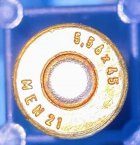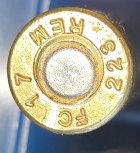I'm loading a bunch of 223s for my AR, I check weight on my powder every 7 bullets or so,I also weight the complete bullet after it's done just making sure no mistakes, normally it's
175. To 177 I'm checking I get a weight 189.5 I pull the bullet apart perfect powder weight bullet 55grain but I find out the brass is a 5.56 the brass for a 223 is 95. The 556 is 108.5 I load 223 specks I realized the 556 has more pressure didn't realize the brass was alot heavier. Shouldn't be any problems shooting right. I'll take any replies
175. To 177 I'm checking I get a weight 189.5 I pull the bullet apart perfect powder weight bullet 55grain but I find out the brass is a 5.56 the brass for a 223 is 95. The 556 is 108.5 I load 223 specks I realized the 556 has more pressure didn't realize the brass was alot heavier. Shouldn't be any problems shooting right. I'll take any replies













